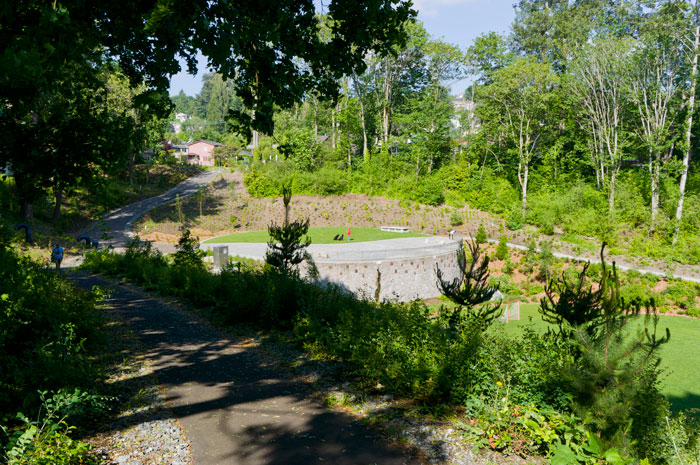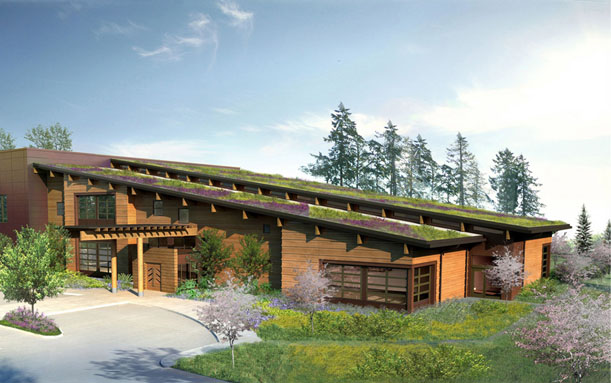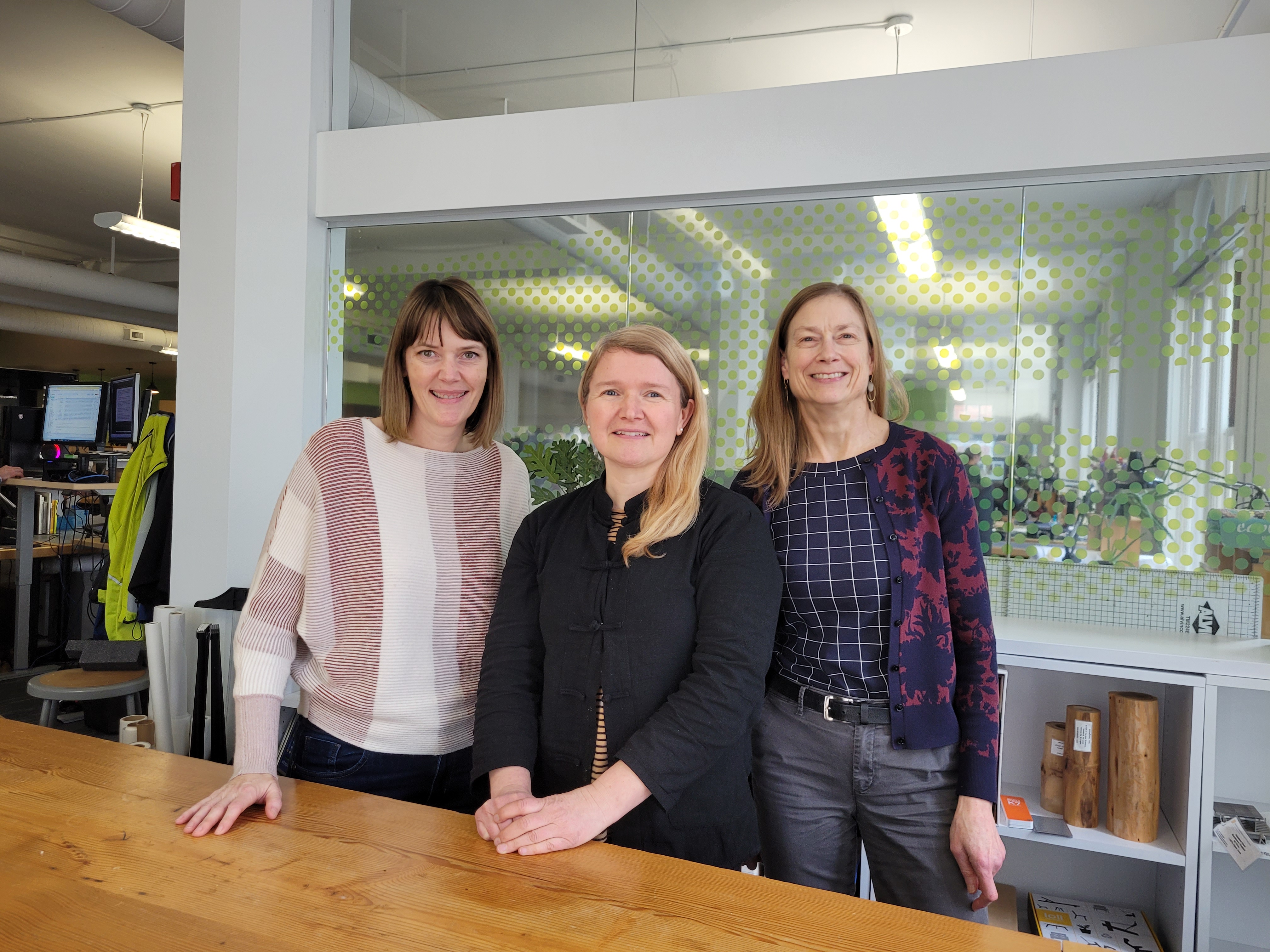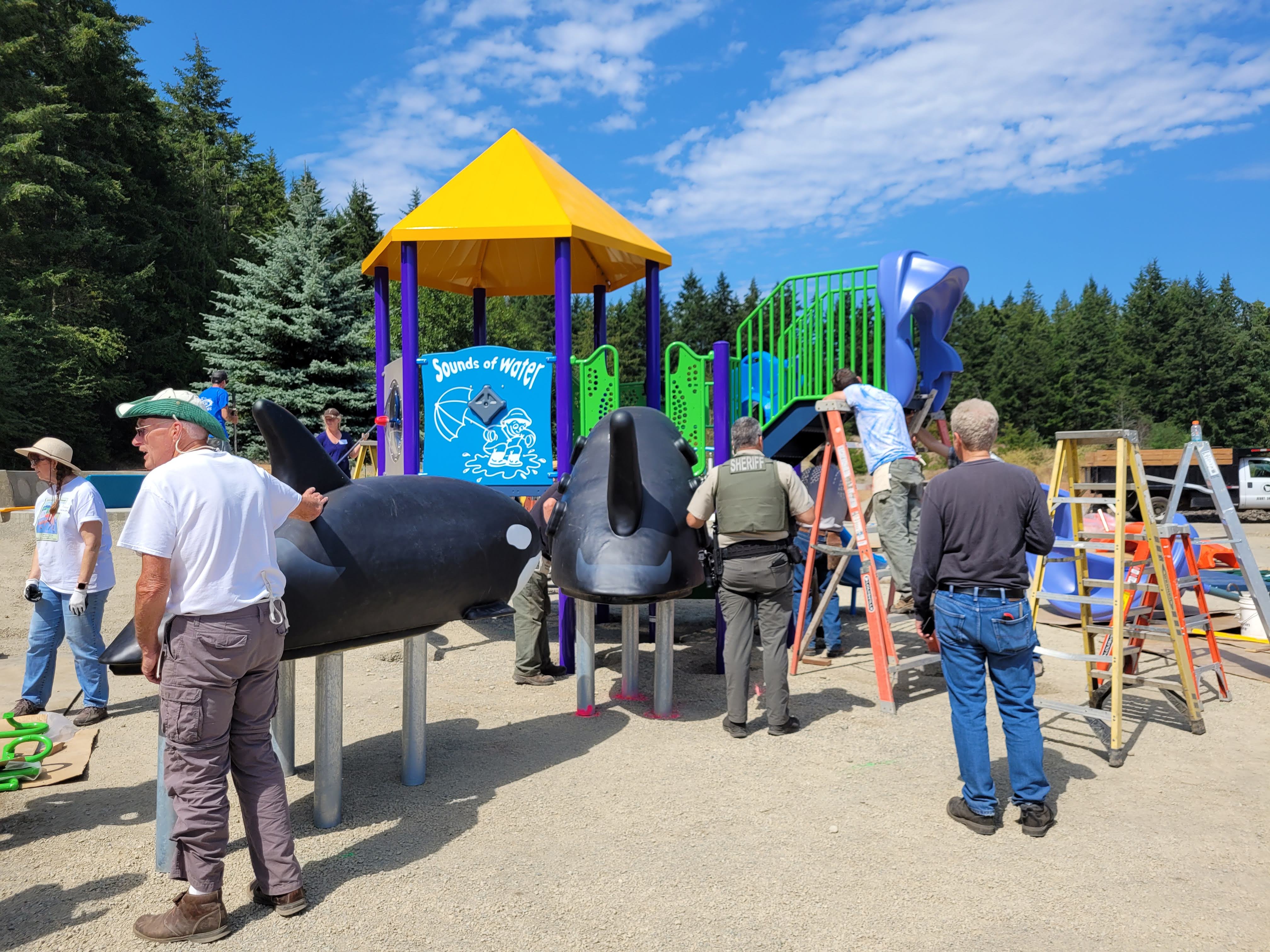A Case for Urban Edible Landscapes
August 29, 2018 | By Admin |
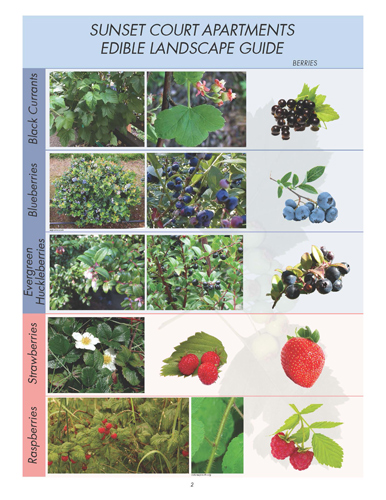
Backyard gardeners, urban farmers, and community plot garden hobbyist have made a huge wave in the Seattle region, bringing ‘grow-it-yourself’ culture into the mainstream. Unfortunately, not everyone has the same access to places for growing food, the time to spend in the garden, or even the ability to put in the work; so how can we integrate food producing plants into the urban environment that also allows access to fresh, healthy food? One of Nakano Associates most recent housing projects designed a landscape using food producing plants.
Sunset Court is Renton Housing Authority’s newest affordable housing community on 2 acres, here Nakano Associates and the project design team took the opportunity to integrate fruits, vegetables, nuts, and herbs into the beautifully planned landscape. With thoughtful species consideration, maintenance requirements of the edible landscape are similar to traditional landscapes, but also offer many delicious benefits. The landscape design at Sunset Court recognizes the effort and time it takes to maintain and harvest the plants and trees and also considers who will be utilizing the open space between planting and shrub areas. Being surrounded by multifamily buildings, the layout of the landscape prioritizes user enjoyment, both passively and actively, with places to play, sit quietly, or gather and socialize. At Sunset Court, the landscape design functionally integrates productive plant materials with other hardy ornamental choices which limits harvesting and maintenance requirements while ensuring the space has year-round aesthetic interest.
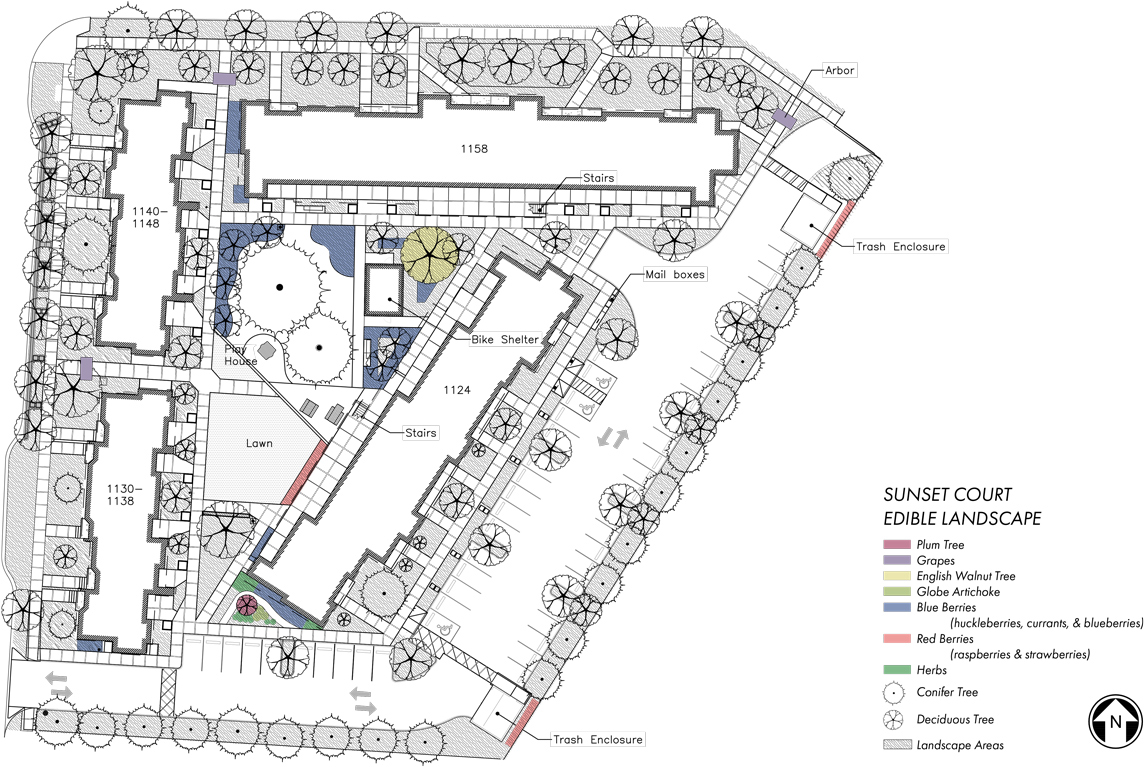
Food producing vegetation is often associated with seasonally specific foliage, but by utilizing year-round beauties, such as blueberries, the landscape can remain lush and lavish throughout the year. Fruit trees, such as plums, put on a brilliant spring show of flowers, as does many herbs like sage, rosemary, and thyme. Runners and climbers like grape vines are perfect for trellises or, in the case of Sunset Court, offer a brilliant accent to arbors at the north and west entrances to the complex. Grapes and berries like currants can give the landscape a dazzling display when we move out of the summer months and welcome the winter. All of these attributes are integrated into the landscape experience at Sunset Court.
With the increasing social acceptance of integrating food into the everyday landscape we begin to see the opportunity to use urban food production as an educational tool exploring the important implications of eating fresh, healthy, and unprocessed food. There is a systemic disconnect between production and consumption of food which separates us from what we are actually putting into our bodies. Understanding the origin of our food informs us about how to make healthy choices and supports an understanding of the implications of those choices. Having daily interactions with edible plants can reinforce and fortify the importance of fresh produce. Nakano Associates produced a visual guide for the residents to help identify and take advantage of the edible landscape which is included in each resident’s apartment welcome package.
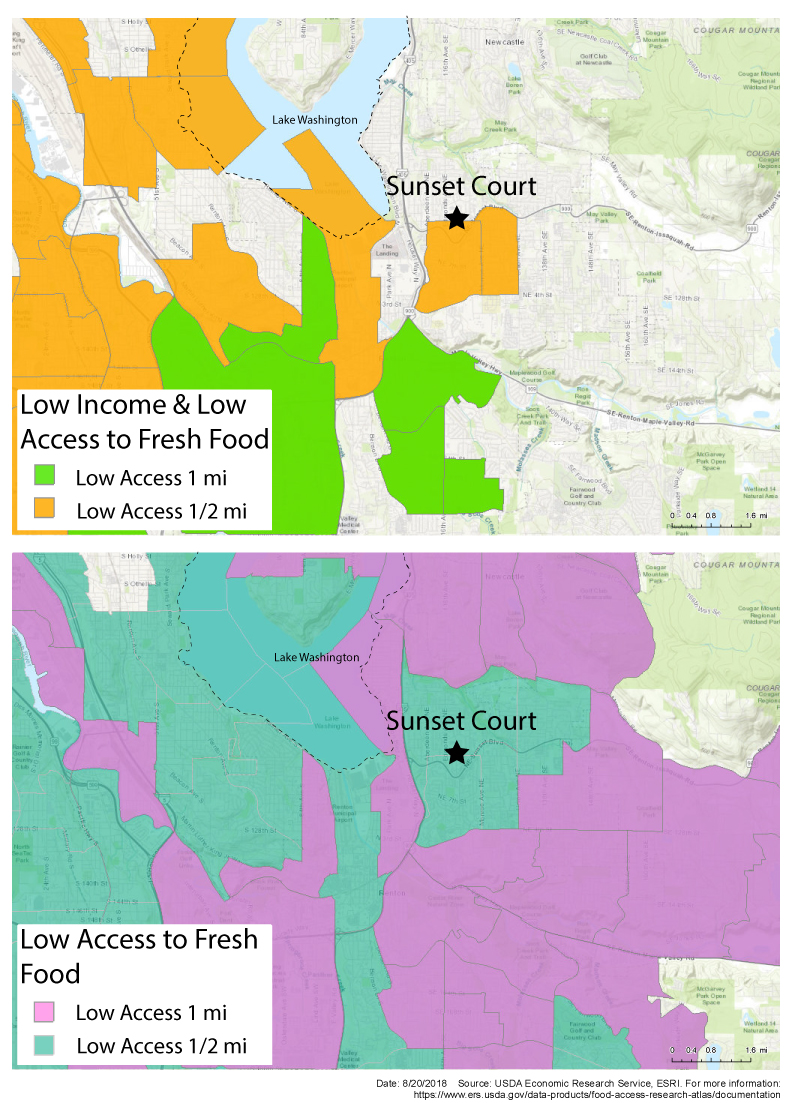
Designing healthy food systems into urban landscapes can become a tool for food justice by providing access to healthy resources for people living in food deserts or neighborhoods with limited access to fresh produce. As the (above) maps show, King County is suffering from a substantial lack of basic access to supermarkets. According to the USDA Economic Research Service the map on the left shows a cross over between both a lack of access and low income. Though this study shows only ½ mile and mile access, many people, especially those in the low income group, do not have the ability to drive to the supermarket and instead opt to shop at smaller ‘corner’ stores which primarily carry processed foodstuffs. Integration of fresh food into the places we live can provide a substantial supplement to the diets of the residents.
The gracefully integrative design at Sunset Court melds together form, function, and fun into a new affordable housing complex and to provide a new precedent to how we interact with our landscape. This design shows efficient and effective ways to think about the landscape a little differently, integrating productive elements and going beyond to support the needs and well-being of the community. This project will serve as a model for Nakano Associates as we continue to design for healthy communities and continue to promote healthy lifestyles.

